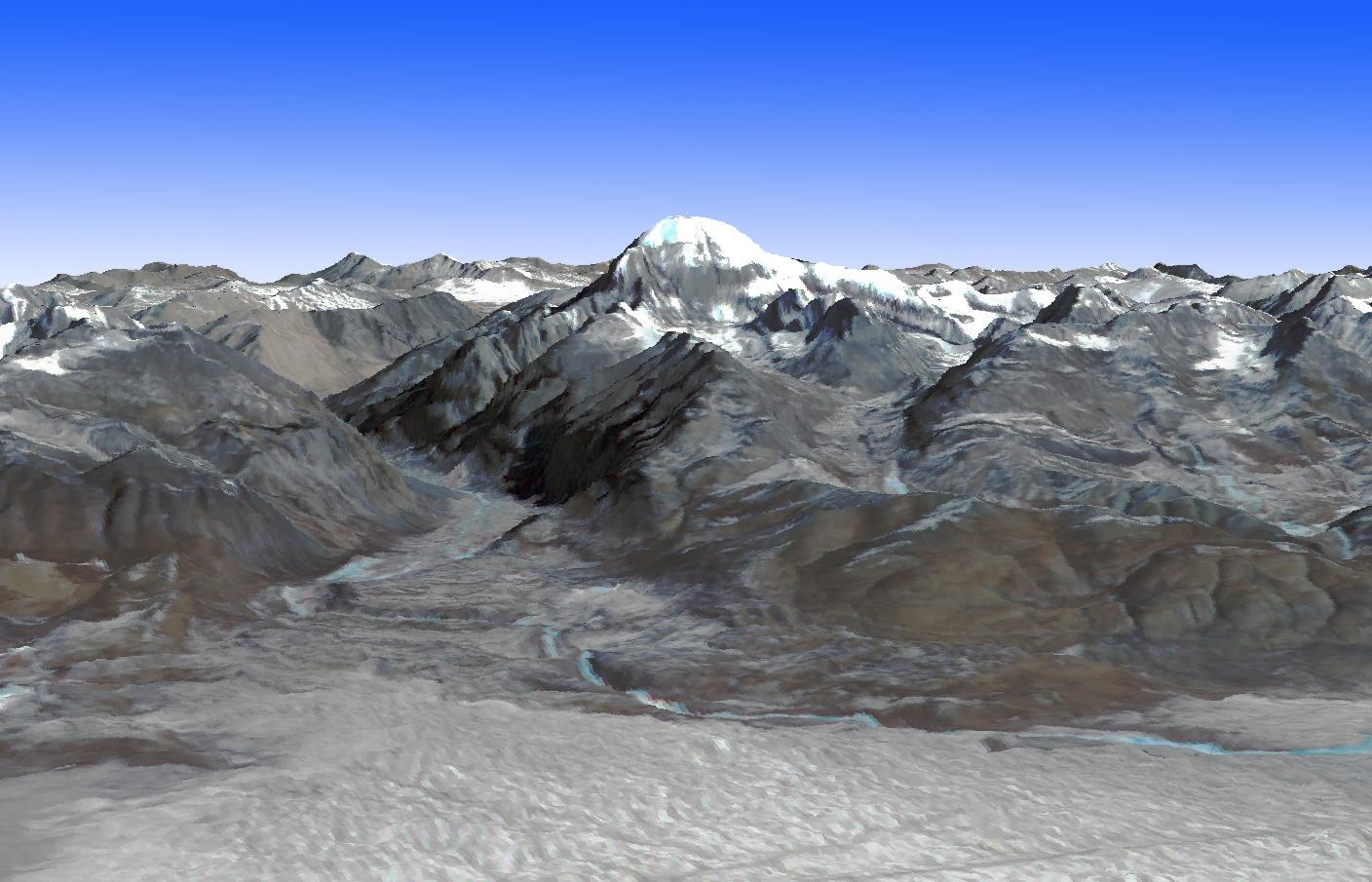The World's Navel
North face of Mount Kailash, Tibet (credit: Wikipedia/Onderej Zvacek)
A mountain stands as a sacred sentinel in western Tibet. Mount Kailash is considered the navel of the world by Tibetans. Waters from its melting snows flow into Asia's longest and most important rivers: the Brahmaputra, the Sutlej, and the Karnali and nourish the lives of millions.
Far-away Kailash is considered holy to the Bon, the Buddhists, Hindus, and Jains who take journeys to visit the sacred mountain at least once in their lives. By tradition, the mountain is off limits for climbers. Instead, visitors trek on a circular pilgrimage, a kora, requiring several days to traverse around the massif at elevations often exceeding 18,000 feet visiting monasteries along the route.

Mount Kailash, Tibet (credit: CalTech/JPL/ASTER team)
Closer to home in Pasadena, California scientists and engineers at CalTech and the Jet Propulsion Laboratory have used multiple light wavelengths to gather visible and infrared scans of the mountain to create the first high-resolution (~50 to 300 feet) map of Mount Kailash, ASTER. The map will be used to monitor changes to the ice and snow on the peak. The ASTER team's goal is to:
"develop a understanding of the Earth as an integrated system, its response to change, and to better predict variability and trends in climate, weather, and natural hazards."
A travel memoir, Circling the Sacred Mountain, presents the inner and outer experiences of two American as they take their own pilgrimage to trek around Kailash. The two adventurers had lofty ambitions which they describe. A video by a local mountain guide offers advice about the mountain, its importance to the people of Tibet, and how to properly approach the remote landscape safely and with reverence. Mount Kailash is a worthy beacon approached with understanding. WHB